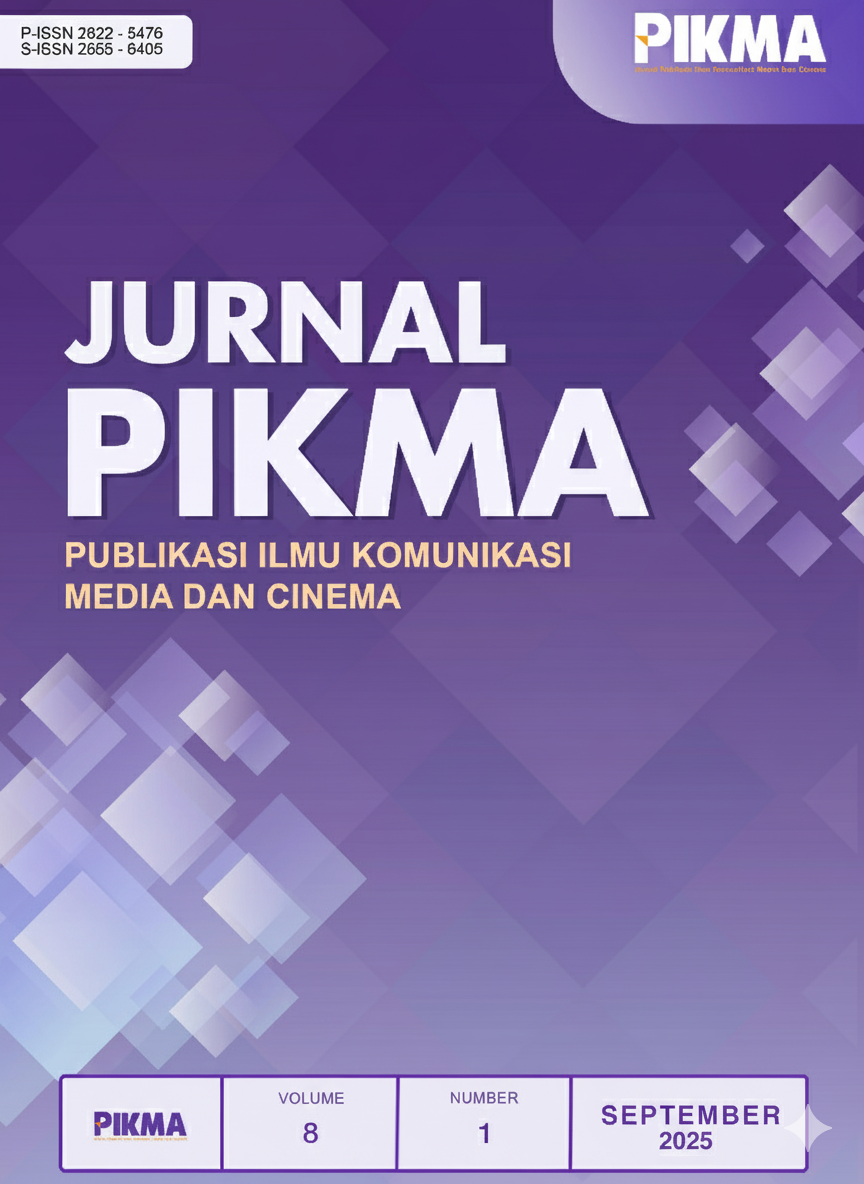Village Information System Development For Data Sovereignty
DOI:
https://doi.org/10.24076/4ga0ex10Keywords:
Village Information System, Development, Data, Data sovereigntyAbstract
The development of the Village Information System (SID) mandated by Village Law No. 6 of 2014 is not merely a formality to fulfill obligations but its existence is crucial as documentation of village data consisting of population data, village potential and village programs. This can certainly occur if the village can interpret the data it has. The study aims to determine the development of SID and the use of data in development. The study used a descriptive analytical method, data collection techniques obtained from FGDs, interviews, observation and documentation. Data analysis used interactive analysis techniques. The results show that the Panggungharjo Village Government has developed SID independently with institutional support, funding, and professional human resources. SID supports more transparent administrative services, encouraging the emergence of various data-based public programs (scholarships and elderly assistance). These findings confirm that Panggungharjo has implemented the principle of data sovereignty, namely, the village has control over data and makes it the basis for development and public services.
References
Adeoti-Adekeye. (1997). The importance of management information systems. MCB Bank. Library Review, 45 (5), 318–327.
Al-Khouri, A. M. (2011). An Innovative Approach For E-Government Transformation. International Journal of Managing Value and Supply Chains (IJMVSC), 2 (1). https://doi.org/10.5121/ijmvsc.2011.2102
Anggun Nadia, & Mahi, B. R. (2023). Anggun Nadia & Benedictus Raksaka Mahi. Economics Development Analysis Journal, 12(2). http://journal.unnes.ac.id/sju/index.php/edaj
Antlov, H., Wetterberg, A., & Dharmawan, L. (2014). Village Governance, Community Life, and the 2014 Village Law in Indonesia. Bulletin of Indonesian Economic Studies, 52 (2), 161–183. https://doi.org/http://dx.doi.org/10.1080/00074918.2015.1129047
Anwar, A. N. R., & Sujai, I. (2020). Analisis Sistem Informasi Desa Terintegrasi di Kabupaten Pangandaran. MODERAT, 6(4), 849–856.
Beshi, T. D., & Kaur, R. (2020). Public Trust in Local Government: Explaining the Role of Good Governance Practices. Public Organization Review, 20(2), 337–350. https://doi.org/10.1007/s11115-019-00444-6
BPS. (2024). Penelitian Potensi Desa.
Budiman, V. (2021). Panduan Fasilitasi Replikasi dan Pelembagaan Pengembangan Sistem Informasi Desa. KOMPAK.
Curtin, G. G., Sommer, M. H., & Vis-Sommer, V. (2013). Introduction. In The World of E-Government (pp. 1–16). Taylor and Francis. https://doi.org/10.1300/J199v02n03_01
Delima, R., Santosa, H. B., & Purwadi, J. (2017). Development of Dutatani Website Using Rapid Application Development. In IJITEE (Vol. 1, Issue 2).
Dilham, A., Yulinda, & Sembiring, B. K. F. (2020). Village office development model for e-government based village apparatus performance. International Journal of Management, 11(5), 358–365. https://doi.org/10.34218/IJM.11.5.2020.035
Ernungtyas, N. F., Boer, R. F., & Qadrifa, S. S. (2024). The government website as user’s information source: A model of user satisfaction, information, and system quality. Informasi, 53(2), 197–214. https://doi.org/10.21831/informasi.v53i2.60579
Fadjarini Sulistyowati, Saptaning Tyas, H., Candra Rusmala Dibyorini, M., & Puspitasari, C. (2021). Pemanfaatan Sistem Informasi Desa (SID) untuk Mewujudkan Smart Village Utilization of Sistem Informasi Desa (SID) to Realize Smart Village in. In Jurnal Ilmu Pengetahuan dan Teknologi Komunikasi (Vol. 23, Issue 1). https://doi.org/https://doi.org/10.17933/iptekkom.23.2.2021.213-226
Fitri, R., Asyikin, A. N., & Nugroho, A. S. B. (2017). Pengembangan Sistem Informasi Desa Untuk Menuju Tata Kelola Desa Yang Baik (Good Governance) Berbasis Tik. POSITIF Jurnal Sistem Dan Teknologi Informasi, 3 (2). https://doi.org/https://doi.org/10.31961/positif.v3i2.429
Grace Natalie, & Sofyan Sjaf. (2021). KualitasPembangunanDesaBerbasisDataDesaPresisi(Kasus:DesaNeglasari,KecamatanDramaga,KabupatenBogor,JawaBarat) QualityofVillageDevelopmentBasedonPrecisionVillageDat(Case:NeglasariVillage,DramagaDistrict,BogorRegency,WestJava). Jurnal Sains Komunikasi Dan Pengembangan Masyarakat, 9(3).
Jahja, R., Haryana, Mariana, D., & Rendra, M. (2012). Sistem Informasi Desa Sistem Informasi dan Data untuk Pembaharuan Desa. Combine ReSource Institution (CRI).
Jaluanto Sunu Punjul Tyoso. (2016). Sistem Informasi Manajemen. Deepublish.
K. Denzin, N., & Lincoln, Y. S. (2009). Handbook of Qualitative Research. Pustaka Pelajar.
Lindawaty, D. S. (2023). Pembangunan Desa Pasca Undang-Undang No. 6 Tahun 2014 tentang Desa [Village Development Post Law No. 6 of 2014 on Villages]. Jurnal Politica Dinamika Masalah Politik Dalam Negeri Dan Hubungan Internasional, 14(1), 1–21. https://doi.org/10.22212/jp.v14i1.4120
Mayowan, Y. (2016). Penerapan Teknologi Informasi dan Komunikasi di Desa (Studi Kasus di Kabupaten Lamongan). Profit: Jurnal Administrasi Bisnis, 10 (1). https://doi.org/https://doi.org/10.21776/ub.profit.2016.010.01.2
Meng, X.-L. (2021). Building Data Science Infrastructures and Infrastructural Data Science License: Creative Commons Attribution 4.0 International License (CC-BY 4.0). In Harvard Data Science Review • Issue (Vol. 3, Issue 2).
Neuman, W. L. (2017). Metodologi Penelitian Sosial: Pendekatan Kualitatif dan Kuantitatif Edisi 7. Indeks.
Nilashi, M., Keng Boon, O., Tan, G., Lin, B., & Abumalloh, R. (2023). Critical Data Challenges in Measuring the Performance of Sustainable Development Goals: Solutions and the Role of Big-Data Analytics. Harvard Data Science Review, 5(3). https://doi.org/10.1162/99608f92.545db2cf
Pamungkas, A. S. (2018). 54 Informational Capability and the Development of Village Information System and Village Owned-Enterprises in Four Villages in Java 1. In Jurnal Pemikiran Sosiologi (Vol. 5, Issue 2).
Porumbescu, G. (2017). Linking Transparency to Trust in Government and Voice. American Review of Public Administration, 47(5), 520–537. https://doi.org/10.1177/0275074015607301
Pramanik, J., Sarkar, B., & Kandar, S. (2017). Impact of ICT in Rural Development: Perspective of Developing Countries. American Journal of Rural Development, 5(4), 117–120. https://doi.org/10.12691/ajrd-5-4-5
Prayitno, A. (2024). LOCAL POLITICAL COMMUNICATION STRATEGY IN IMPROVING VILLAGE PUBLIC SERVICE PERFORMANCE. JWP (Jurnal Wacana Politik), 9(3), 333–342. https://doi.org/10.24198/jwp.v9i3.56844
Rianto, P., Wahyono, S. B., Kurnia, N., & Dkk, W. M. A. (2017). Sistem Informasi Desa dan Akses Informasi. PR2Media.
Rohman Kusmayad, R. C., Wen, I. M., & Jatmikowati, S. H. (2024). Community Participation in Village Development. International Journal of Research in Social Science and Humanities, 05(06), 124–145. https://doi.org/10.47505/ijrss.2024.6.10
Safdar, G., Javed, M. N., & Amin, S. (2020). Use of internet for education learning among Female University Students of Punjab, Pakistan. Universal Journal of Educational Research, 8(8), 3371–3380. https://doi.org/10.13189/ujer.2020.080809
Sitti Nurmasita Achsin, Hafied Cangara, & Andi Alimuddin Unde. (2015). Profil Desa dan Kelurahan sebagai Sumber Informasi: Studi Evaluasi tentang Penyediaan Informasi Potensi Desa dan Kelurahan Di Sulawesi Selatan oleh Badan Pemberdayaan Masyarakat Pemerintahan Desa dan Kelurahan (BPMPDK) Provinsi Sulawesi Selatan. Jurnal Komunikasi KAREBA, 4(4). https://journal.unhas.ac.id/index.php/kareba/article/view/649
Veeramootoo, N., Nunkoo, R., & Dwivedi, Y. K. (2018). What determines success of an e-government service? Validation of an integrative model of e-filing continuance usage. Government Information Quarterly, 35(2), 161–174. https://doi.org/10.1016/j.giq.2018.03.004
Watrianthos, R., Triyanto, Y., Pristiyono, Hasibuan, D., & Samsu. (2019). e-Government Village Model. Proceedings of the Third Workshop on Multidisciplinary and Its Applications, WMA-3. https://eudl.eu/proceedings/WMA-3/2019?articles_page=2
Yong-duck Jung, & Sea Young Sung. (2012). The Public’s Declining Trust in Government in Korea. Meiji Journal of Political Science and Economics, 1. www.trust.edelman.com
Yoraeni, A., Basri, H., & Puspasari, A. (2022). PENERAPAN SISTEM INFORMASI PELAYANAN DESA DALAM MENINGKATKAN KUALITAS PELAYANAN PUBLIK DAN MEWUJUDKAN SMART VILLAGE. JMM (Jurnal Masyarakat Mandiri), 6(5). https://doi.org/10.31764/jmm.v6i5.10655
Zaenal Mukarom, & Muhibudin Wijaya Laksana. (2015). Manajemen Pelayanan Publik. Pustaka Setia.
Published
Issue
Section
License
Copyright (c) 2025 Jurnal PIKMA : Publikasi Ilmu Komunikasi Media Dan Cinema

This work is licensed under a Creative Commons Attribution-NonCommercial 4.0 International License.








